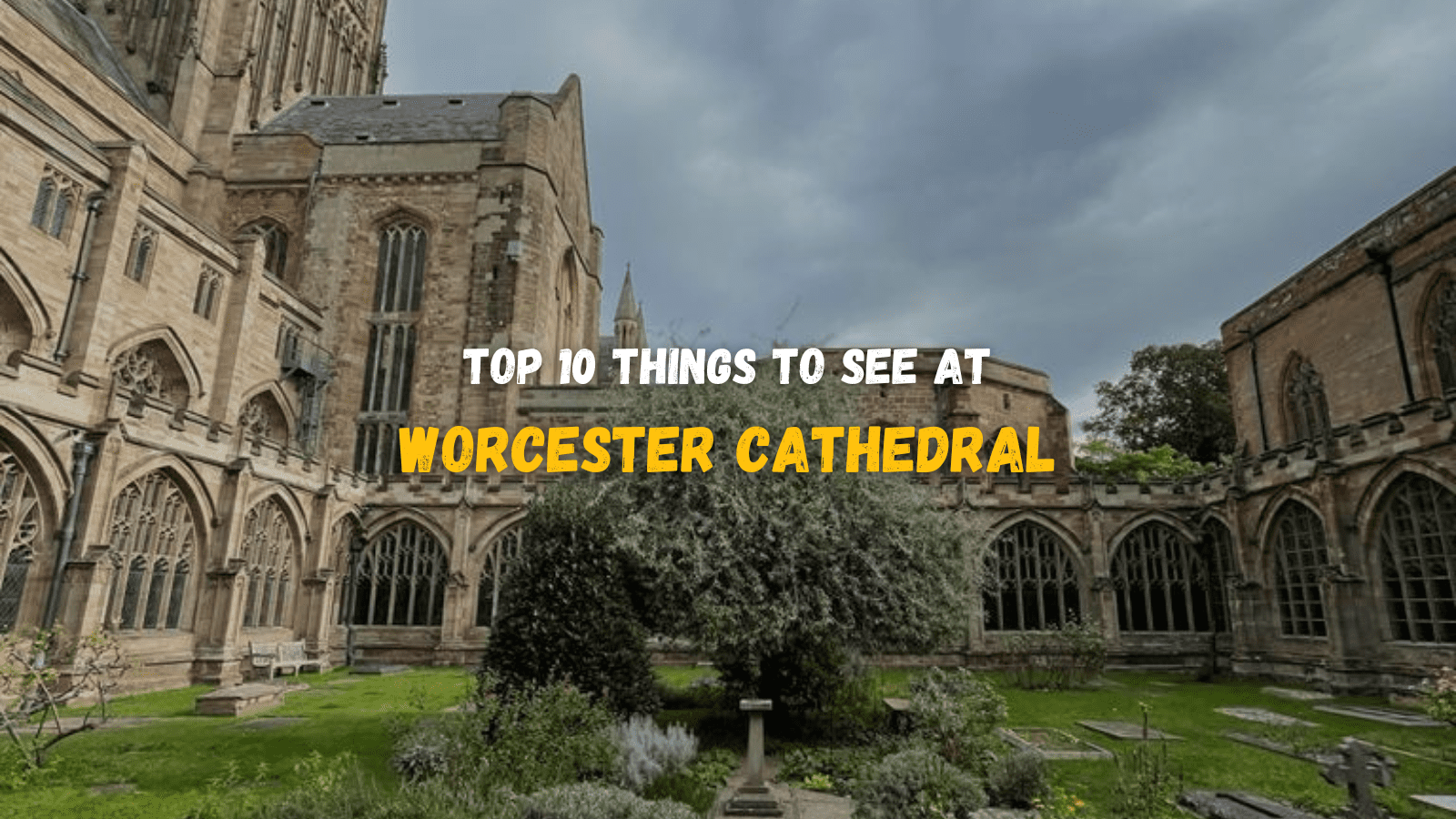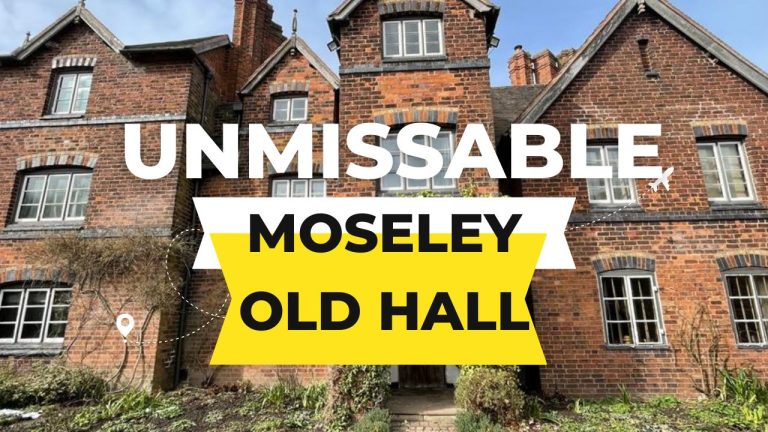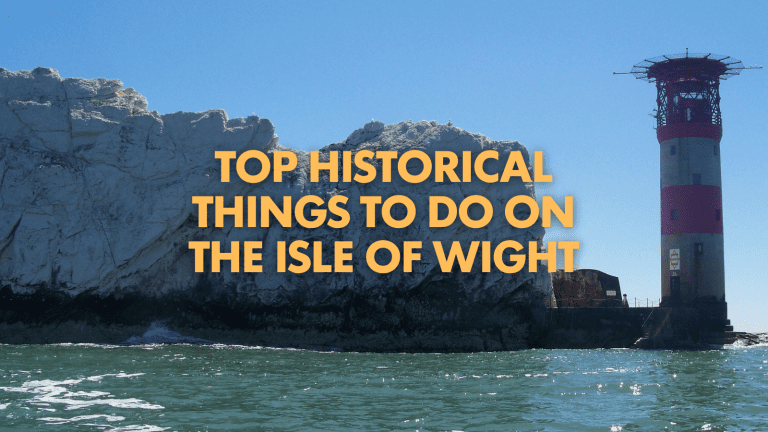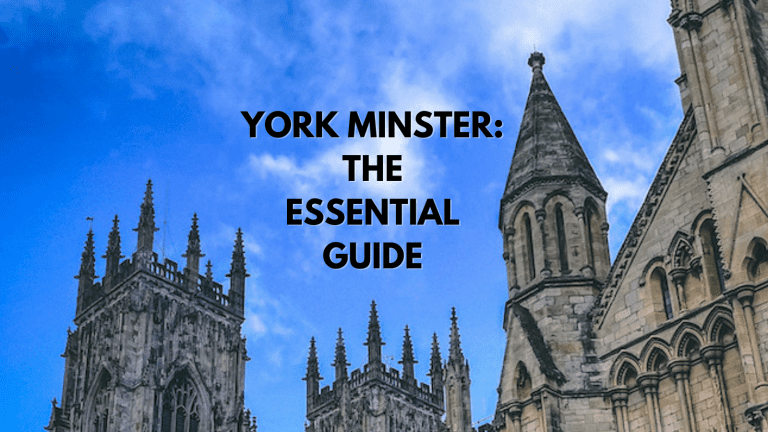Top 10 things to see at Worcester Cathedral
Worcester Cathedral on the banks of the River Seven has stood in various forms since the year 680.
There was a monastery on the site, and the ruins can still be seen.
St Wulfstan is the major ecclesiastical figure associated with the Cathedral. He became bishop in the year 1062 and was the only Anglo-Saxon to remain in office after the Norman conquest. It was Wulfstan that began the construction of the church we see today.
He was canonised by Pope Innocent III in 1203, and his shrine became a focal point for pilgrims, including royalty. On Easter Sunday, 1159, Henry II and Elenor of Aquitaine visited and laid their crowns on the Shrine, vowing never to wear them again.
King John made numerous visits to the Cathedral to pray at the shrine.
Like most Cathedrals, Worcester Cathedral suffered during the reformation with the destruction of the shrines of St Wulfstan and St Oswald. However, the presence of the chantry chapel of Prince Arthur, Henry VIII’s older brother, meant that it suffered less than most.
Worcester Cathedral is open daily (check the website before you travel for last-minute closures due to events.) There are local car parks, and access is simple. Entry to Worcester Cathedral is free. You can support the cathedral with a donation or by making a purchase in the shop or café.
Here are our top highlights that you don’t want to miss.
King John’s Tomb
King John had a long association with Worcester Cathedral. When he knew he was near death at Newark Castle, he wrote in his will that he wished to be buried at Worcester.
His body was duly taken to the Cathedral and buried in the Quire between the shrines of the two Saints, Oswald and Wulstan.
The marble effigy on top of the top is the oldest of any King of England. (Look out for smaller representations of Oswald and Wulfstan around the King’s head.)
King John was originally buried in the ground with the effigy lying at floor level. However, Elizabeth I visited Worcester Cathedral and ordered that a tomb chest be constructed. John’s coffin was transferred to this chest, and the effigy was laid on top.
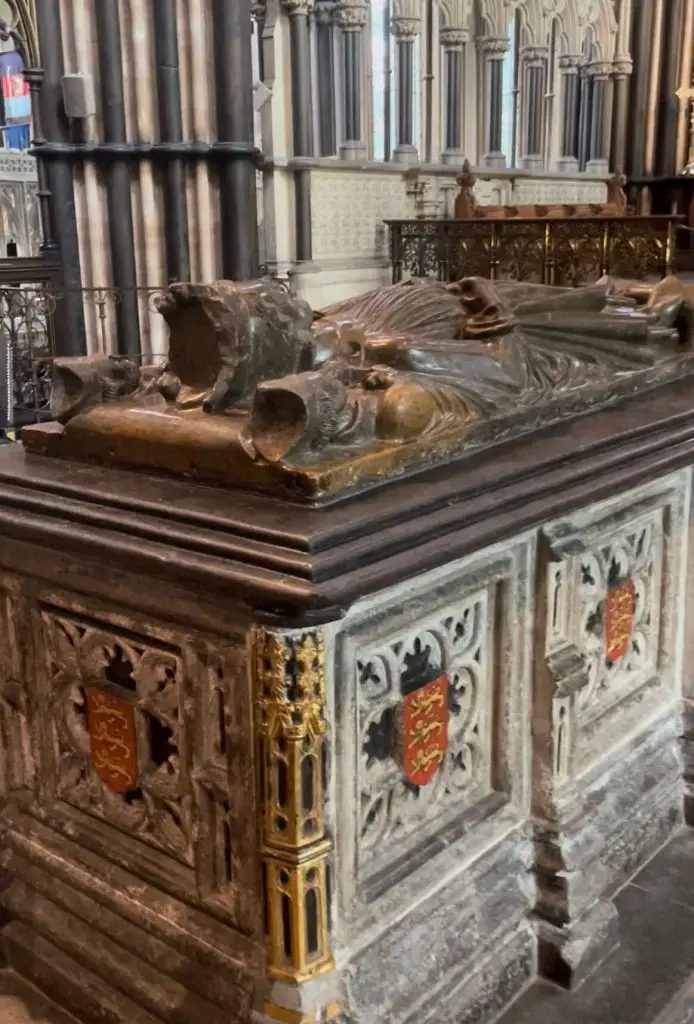
Prince Arthur Tudor’s Tomb and Chantry Chapel
Prince Arthur Tudor, Prince of Wales, died at Ludlow Castle in April 1502. He and his new wife, Catherine of Aragon, both contracted the sweating sickness. Catherine of Aragon survived. Arthur Tudor did not.
Henry VII ordered his son to be buried here at Worcester cathedral. Probably because it was the closest suitable location and it already had one royal tomb.
The funeral was a dramatic affair that was very similar to that of his father in Westminister Abbey a few years later. A knight entered the West Doors, he was dressed in Arthur’s armour, and he rode the horse up the middle of the Nave to the quire.
A chantry chapel was constructed (it took twelve years to build), and this is where Arthur’s tomb rests. Be sure to look out for the symbols carved on the outside of the tomb that represent The House of York, The House of Tudor, The House of Lancaster, The Royal Coat of Arms, The Beaufort Portcullis, and the Pomegranate of Catherine of Aragon.
Mary I and Elizabeth I both visited Worcester Cathedral to visit the tomb of their uncle. It seems that Henry VIII didn’t bother to visit his brother’s grave.
Benedictine Monastery Ruins
Many people miss the few remains of the Benedictine Monastery that the cathedral was once the church of.
They lie in the gardens outside the huge West Doors. Access via the Water Gate (built-in 1378) is probably the best way to view this and then subsequently enter Worcester cathedral.
The largest part of the ruins are remains of the Guesten Hall. Essentially the guest quarters in the monastery.
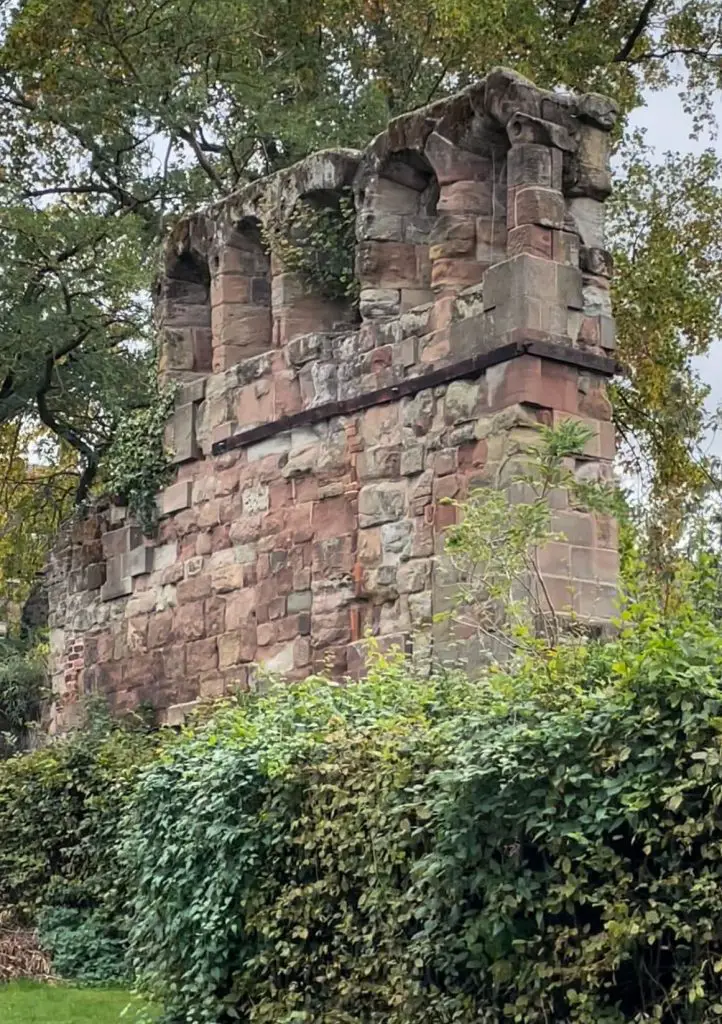
Medieval Cloisters and Chapter House
There is nothing like medieval cloisters to give a cathedral a sense of magic. Tred in the footsteps of the old monks as they went around their day-to-day business.
The Cloisters form a square and offer a link to the Church and the working buildings.
The Chapter House was built in 1100. It was the first of its kind – a circle or polygonal building.
It was in here, the monks would meet to discuss the business of the community.

Grave of Stanley Baldwin
The ashes of the three-time Prime Minister of the United Kingdom are buried in the Nave.
Don’t miss the Grave marker close to the West door.
Norman Crypt
Daily services are still held in the impressive Norman crypt if you would like to worship during your visit to Worcester Cathedral.
This is where you get to the very heart of the earliest part of the Cathedral building; history seems to come alive here.
St Wulfstan himself would have stood within this very structure and you can get a feel for the original size of the cathedral building.
Victorian Stained Glass and Pink Giraffe
Above the West Door is a magnificent Victorian stained glass window.
It depicts the creation of the world and the Garden of Eden.
A fun thing to do (especially with children) is to hunt for the famous pink giraffe!
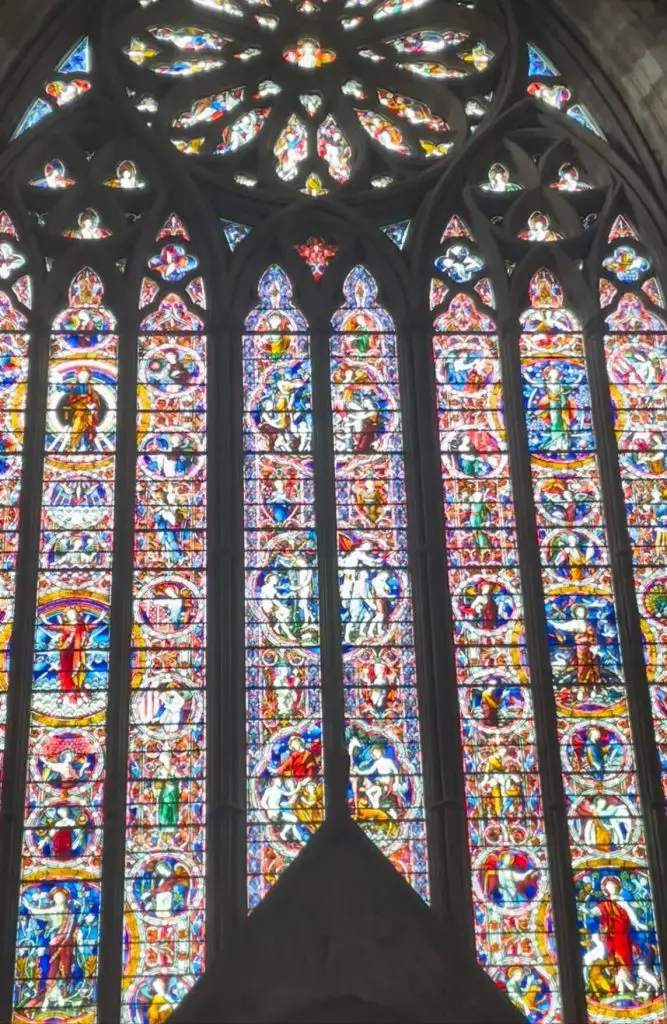
Elgar Memorial
In the northwest aisle, there is a wall memorial to the composer Edward Elgar.
Above the memorial is a stained glass window that shows “The Dream of Gerontius” (one of Elgar’s works.)
Elgar was born close to the city, and his father owned a music shop on the high street.
It was at the famous three choirs festival in Worcester Cathedral that Elgar first performed his revised version of the Enigma Variations.
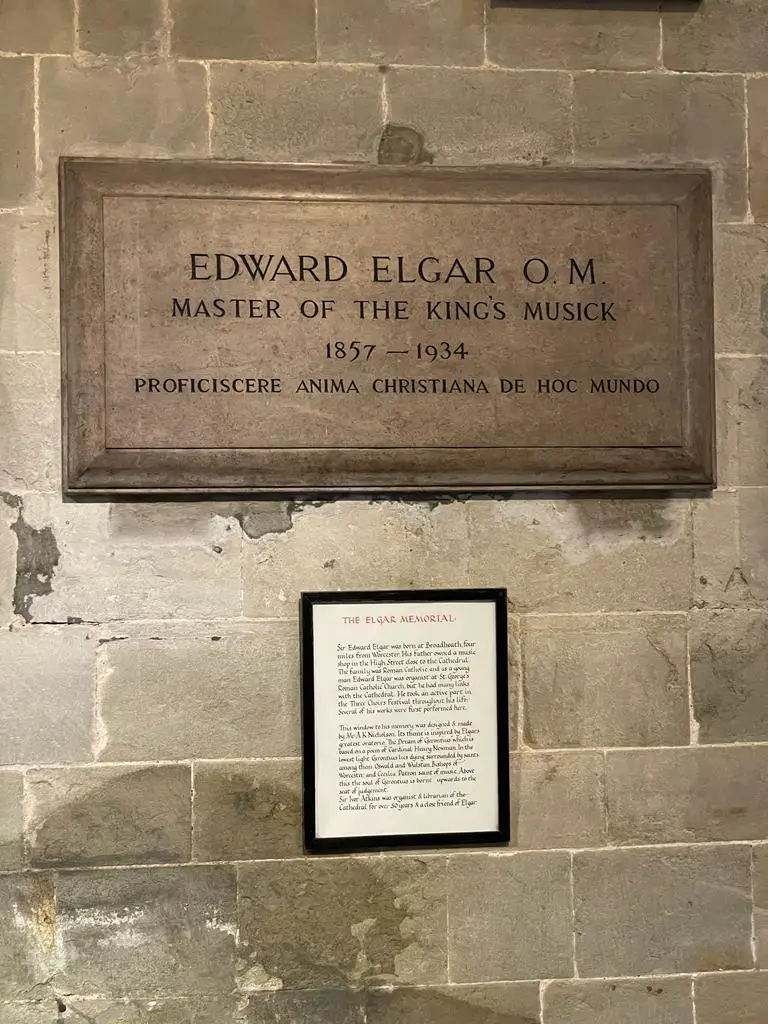
Nave Tombs and Memorials
There are numerous tombs in the nave. They range in age from medieval through to the seventeen century.
The Beaufort Tomb and the Tomb of Richard Edes are particularly worthy of closer inspection.
Worcester Cathedral Tower
The Cathedral has a long history with towers. The first fell down in the year 1175. Its replacement was destroyed as it was clear it was unsafe. The present version was built in 1374.
King Charles II climbed the tower in order to watch the Battle of Worcester during the Wars of the Three Kingdoms.
It is possible to climb the Tower, but only on a guided tour. It is worth checking the opening times of these tower tours before you visit. Essential works do sometimes have to take place, so tours can be cancelled at the last minute. Check the cathedral website for additional information.
There are 235 steps in the Tower – so be prepared.
